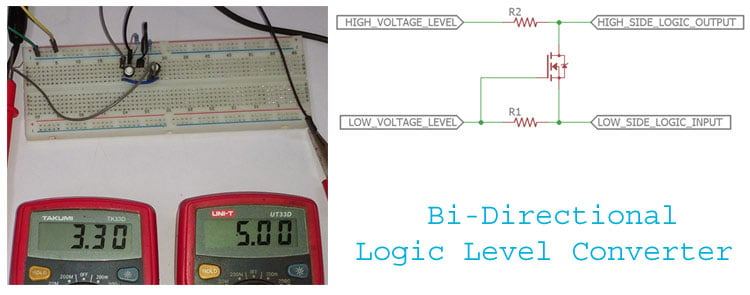Level shifter circuits allow us to convert signals from one voltage level to another. The functionality of these circuits is essential in many modern digital systems, as devices often use different voltage levels. In this article, we’ll take a look at the basics of level shifters and how they are used in today’s digital applications.
Level shifters are used to convert the logic levels between two devices with different power supply voltages. A level shifter converts the logic signal from one voltage level to another. This allows communication between devices that use different voltage levels. For example, a device operating at 3.3V can be used to communicate with a device operating at 5V by using a level shifter circuit.
Level shifters can also be used to extend the range of acceptable input voltages for a circuit. By using a level shifter, a signal from a device operating at 5V can be converted to a signal that is suitable for a device operating at 3.3V. This can be useful for interfacing devices that have different voltage requirements.
Level shifter circuits come in a variety of forms such as open drain, push-pull, and three-state. Each type has its own advantages and disadvantages, so it is important to choose the right level shifter for the application.
Open drain level shifters are the most commonly used type of level shifter. They are simple and inexpensive, making them a popular choice in many applications. An open drain level shifter has two paths, a high path and a low path. The high path is used to convert a high voltage signal to a lower voltage signal, while the low path is used to convert a low voltage signal to a higher voltage signal.
Push-pull level shifters are similar to open drain level shifters, but they have an additional path for pulling the output signal low. This allows the output signal to go below the minimum voltage level of the receiver. Push-pull level shifters are more complex than open drain level shifters, but they are also more efficient and provide better noise immunity.
Three-state level shifters are the most advanced type of level shifter. They have three paths, a high path, a low path, and a third path that allows the output signal to float. Three-state level shifters are used in applications where low power consumption is important.
Level shifters are essential components in many modern digital systems. They allow devices with different voltage levels to communicate, and they extend the range of acceptable input voltages for a circuit. When choosing a level shifter, it is important to consider the type of level shifter, the voltage requirements, and the power consumption. With the right level shifter, you can ensure efficient and reliable communication between devices.

Level Shifting Digital Signals

Two Opamp Circuits Are They The Same General Electronics Arduino Forum

Cmos Level Shifters From 0 To 18 V Output Springerlink

Level Shifters Semiconductor Engineering

Negative Voltage Level Shifter Circuit Diagram Schematic And Image 03

Conventional Level Shifter Scientific Diagram
Opamp Level Shifter Circuitlab

Us7710183b2 Cmos Level Shifter Circuit Design Google Patents

A High Density Performance Low Power Level Shifter

Schematic Of The Conventional Level Shifter Scientific Diagram

Bi Directional Logic Level Converter Using Mosfet

What Is Working Of Level Shifter Circuit Eeestudy

What Is A Level Shift Circuit Quora

Low Power Bi Directional Level Shifter

Level Shifter An Overview Sciencedirect Topics

Bi Directional Logic Level Converter Using Mosfet
A Novel High Sd And Low Power Negative Voltage Level Shifter For Applications

How To Level Shift 1 Wire Systems Maxim Integrated

Activity Voltage Level Shifting For Adalm2000 Analog Devices Wiki

Standard Level Shifter Ls Schematic Scientific Diagram
